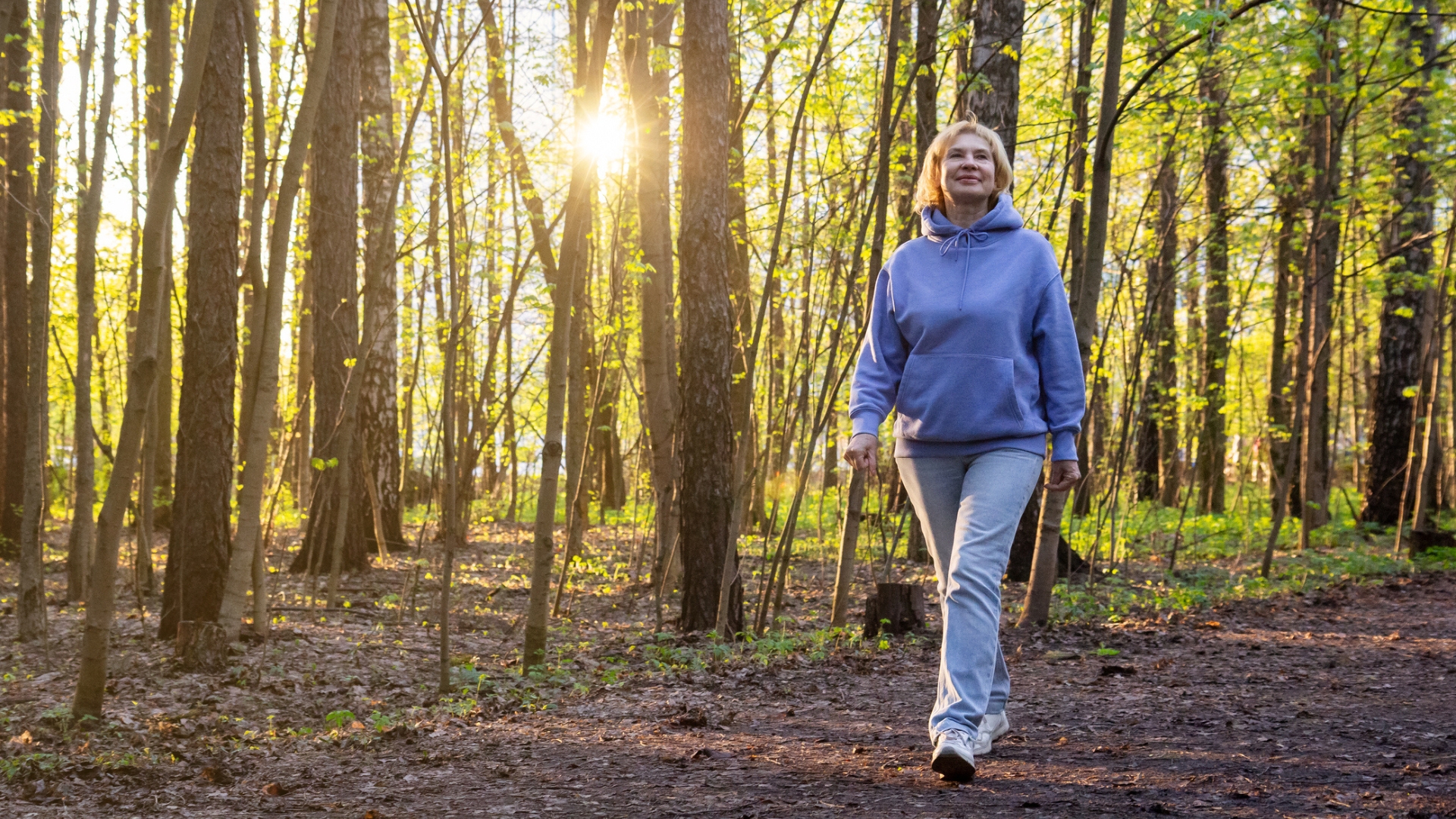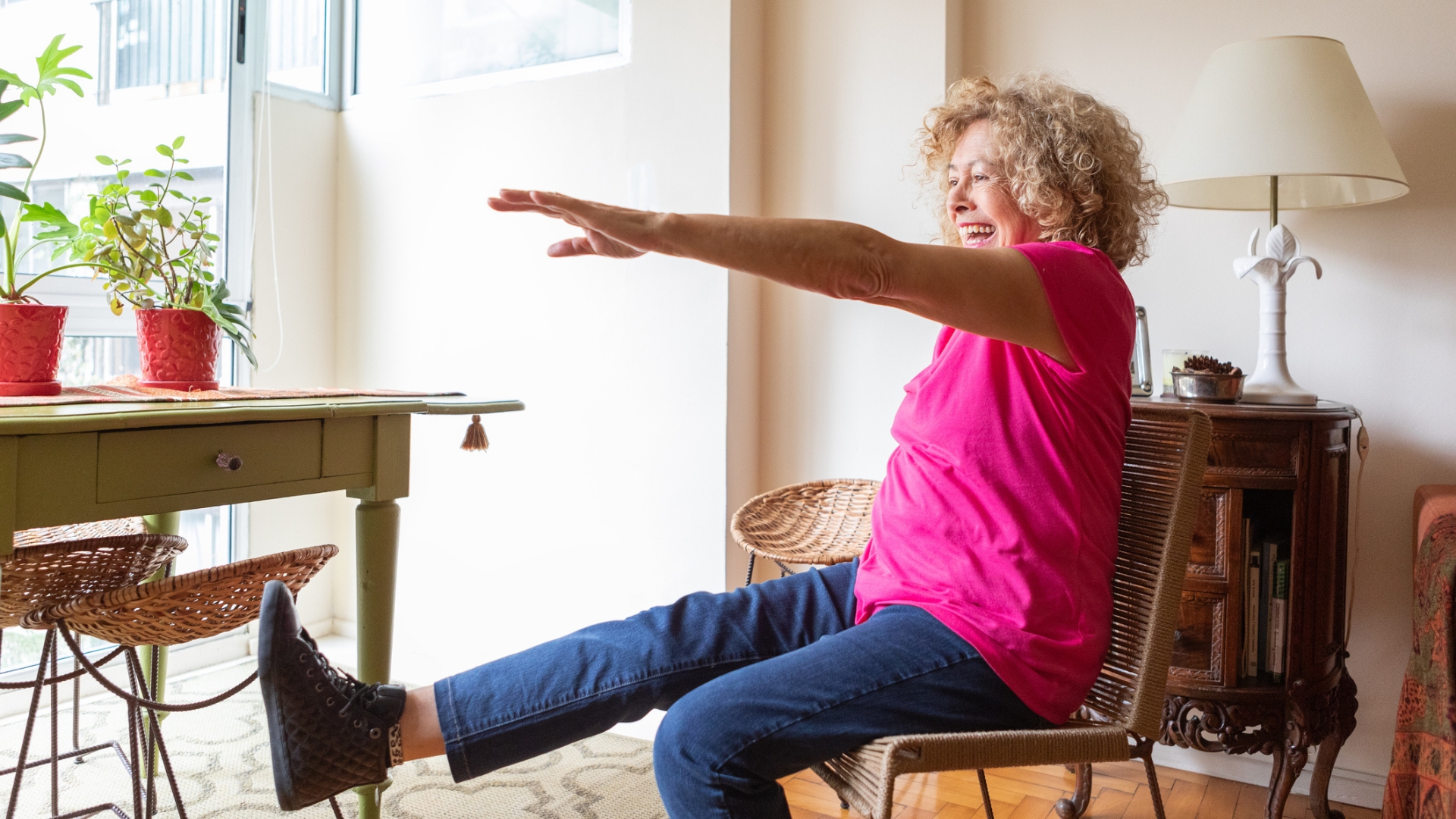I did 30 minutes of walking yoga every day for a month—here's what I learned
The daily dose brought more than just peace and calm into my life

A little over a month ago, I tried walking yoga for the first time on the recommendation of yoga teacher and chronic pain advocate Sophia Drozd, creator of Yoga for Pain app.
I was already walking every day so it made sense to squeeze even more benefits from those walks.
Straight away, I was blown away by how calm walking yoga made me feel, but as I incorporated it into my routine, I began to notice deeper changes too.
If you’re not familiar with walking yoga, it involves syncing your steps with your breath and being mindful of your surroundings and senses, which can boost calm and wellbeing.
I found I could time my inhalations and exhalations with my left foot strike, but you can adjust the rhythm to find what feels right for you.
I don’t do walking yoga every time I go out, just when I walk alone. That way I can fully immerse myself in the experience without distraction.
After a month of walking yoga, here’s what I discovered.
Get the Fit&Well Newsletter
Start your week with achievable workout ideas, health tips and wellbeing advice in your inbox.
I’ve ditched the headphones
I used to want to keep all noise and stimulation at bay to get through a walk—traffic noise, wind, rain could all combine to make me feel overwhelmed and grumpy—so I’d arm myself with noise-cancelling headphones, a headband and sheer stubbornness.
But I found that when I’m focused on my breath and footsteps, I don't need these distractions.
Now, if I feel overwhelmed, I refocus my attention on my walking rhythm (usually two steps per breath) and it helps to ground me, by drawing my attention away from external disturbances and back into my body and breath.
This is a handy tool I use beyond my walking yoga sessions: if I’m starting to feel overstimulated, I now know how to manage it.
Morning walking yoga sets me up for the day
At first, I was doing my walking yoga sessions randomly, slotting them in during dog walks, on my way to the corner shop or even when watering the plants.
Then, when the UK clocks changed for springtime in March, I began waking up earlier and had more time to fit in a walk before work.
Now, instead of my usual rushed start to the day, I start with 30 minutes of mindful walking yoga after breakfast.
As someone with ADHD, I thrive on routine (although I often resist it) and having a regular dedicated slot in my day for nothing but walking and breathing really helps me focus.
Doing it before work means that an early dose of calm can carry me through my morning with more clarity and productivity.
I’ve also struggled with low mood, and simply getting outside and showing my face to the sun (or, as I live in England, the clouds) has had a significant balancing effect.
Combining outdoor movement with breathwork—a powerful tool for nervous system regulation—has helped my emotional health more than I ever expected.
I sleep more deeply and nap less
This could be due to several factors but spending more time moving, being outdoors and developing my mindfulness practice has helped me sleep better.
I drop off more easily, wake up less and generally feel more rested.
I live with an energy-limiting illness, which often means I need multiple breaks throughout the day, but since starting walking yoga, I feel more consistently energized.
I’ve found I’m napping less as the afternoon energy crash no longer wipes me out. I still rest when I need to but I can now get through the day without the intense urge to sleep.
How to do walking yoga
A post shared by Fit&Well (@wearefitandwell)
A photo posted by on

Lou Mudge is a Health Writer at Future Plc, working across Fit&Well and Coach. She previously worked for Live Science, and regularly writes for Space.com and Pet's Radar. Based in Bath, UK, she has a passion for food, nutrition and health and is eager to demystify diet culture in order to make health and fitness accessible to everybody.
Multiple diagnoses in her early twenties sparked an interest in the gut-brain axis and the impact that diet and exercise can have on both physical and mental health. She was put on the FODMAP elimination diet during this time and learned to adapt recipes to fit these parameters, while retaining core flavors and textures, and now enjoys cooking for gut health.

